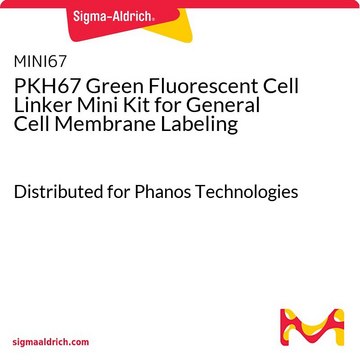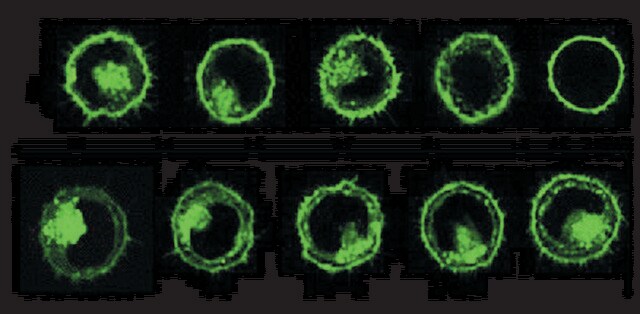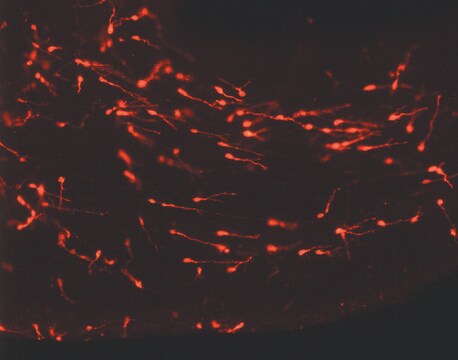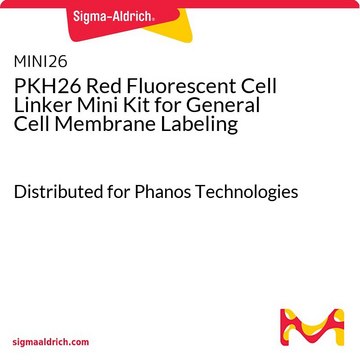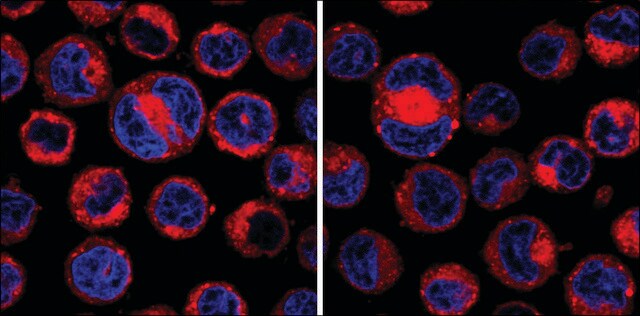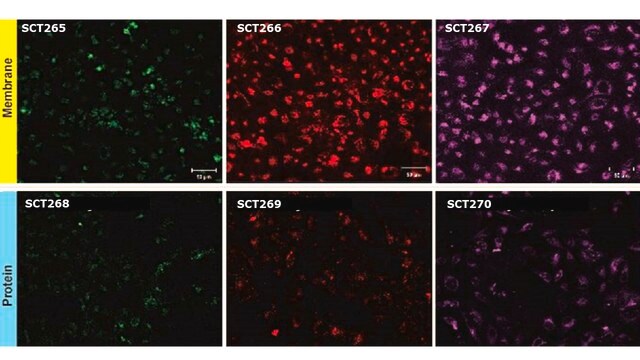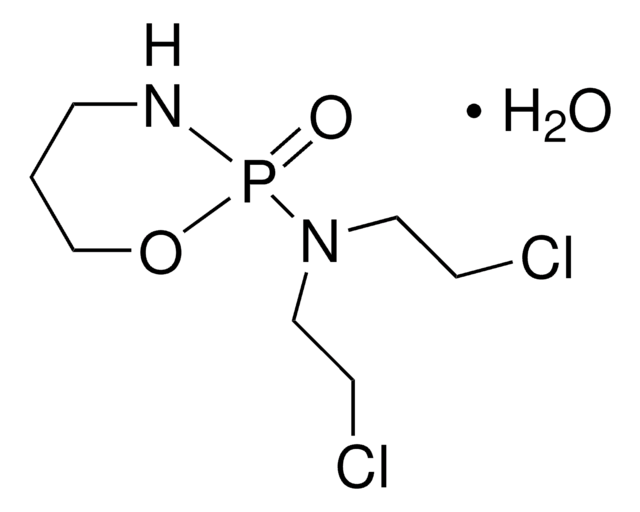MIDI67
PKH67 Green Fluorescent Cell Linker Midi Kit for General Cell Membrane Labeling
Distributed for Phanos Technologies
Synonyme(s) :
Green PKH membrane midi labeling kit
About This Item
Produits recommandés
Conditionnement
pkg of 1 kit
Niveau de qualité
Fabricant/nom de marque
Distributed for Phanos Technologies
Conditions de stockage
protect from light
Technique(s)
flow cytometry: suitable
Fluorescence
λex 490 nm; λem 502 nm (PKH67 dye)
Application(s)
cell analysis
detection
Méthode de détection
fluorometric
Conditions d'expédition
ambient
Température de stockage
room temp
Description générale
Slow loss of fluorescence has been observed in in vivo studies using PKH1 and PKH2. PKH67 may exhibit similar properties since this behavior appears to be characteristic of green cell linker dyes, but not red cell linker dyes. Correlation of in vitro cell membrane retention with in vivo fluorescence half life in non-dividing cells predicts an in vivo fluorescence half life of 10-12 days for PKH67. Other green cell linker dyes with similar half lives have been used to monitor in vivo lymphocyte and macrophage trafficking over periods of 1-2 months, suggesting that PKH67 will also be useful for in vivo tracking studies of moderate length.
Application
- labeling exosomes
- extracellular vesicles (EVs)l
- normal and sickle red blood cells (RBCs)
- Raji cells
Liaison
Informations légales
Composants de kit seuls
- PKH67 Dye 2 x 0.1
- Diluent C 6 x 10
Produit(s) apparenté(s)
Mention d'avertissement
Danger
Mentions de danger
Conseils de prudence
Classification des risques
Eye Irrit. 2 - Flam. Liq. 2
Code de la classe de stockage
3 - Flammable liquids
Point d'éclair (°F)
57.2 °F - closed cup
Point d'éclair (°C)
14 °C - closed cup
Faites votre choix parmi les versions les plus récentes :
Déjà en possession de ce produit ?
Retrouvez la documentation relative aux produits que vous avez récemment achetés dans la Bibliothèque de documents.
Les clients ont également consulté
Articles
A video about how you can use fluorescent cell tracking dyes in combination with flow and image cytometry to study interactions and fates of different cell types in vitro and in vivo.
Optimal staining is a key component for studying tumorigenesis and progression. Learn useful tips and techniques for dye applications, including examples from recent studies.
PKH and CellVue® Fluorescent Cell Linker Kits provide fluorescent labeling of live cells over an extended period of time, with no apparent toxic effects.
Notre équipe de scientifiques dispose d'une expérience dans tous les secteurs de la recherche, notamment en sciences de la vie, science des matériaux, synthèse chimique, chromatographie, analyse et dans de nombreux autres domaines..
Contacter notre Service technique